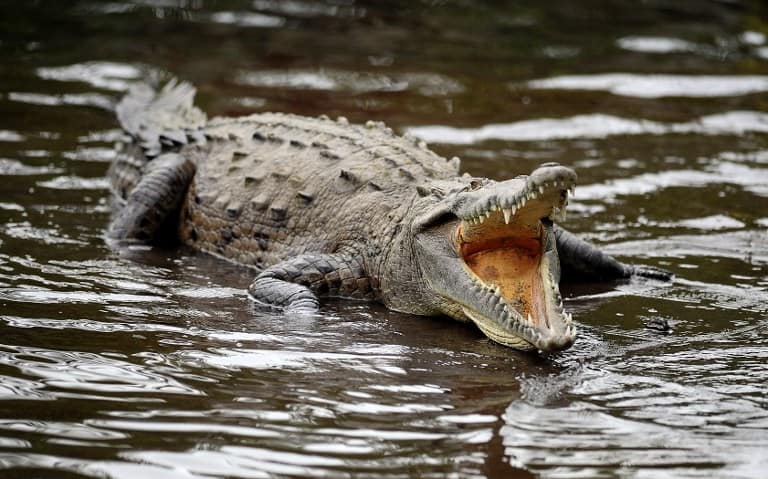Following two crocodile sightings in three days at the recent World Surf League event in the central Pacific coastal town of Esterillos, Costa Rican lawyer and activist Walter Brenes says he’s fed up with the government’s inability to control the exponential growth of croc populations near the country’s beaches.
Brenes, who is the co-founder of the Orange Wave company that organized the Essential Pro QS event earlier this month, told The Tico Times he plans to sue Costa Rica’s Environment Ministry (MINAE) and the National System of Conservation Areas (SINAC) for not taking necessary actions to limit crocodile populations. He said the appearances of crocs at the beach at Esterillos was “the last straw,” and the government should be responsible for conducting studies and making preventive plans.
“I live in Playa Hermosa, and I always see crocodiles at the beach when I’m surfing here,” Brenes said. “I know that crocodiles can be in the ocean, but it’s not rational that the government refuses to help at all with this issue. They can’t be so protective of the animals that they put humans in danger and risk tourism dollars.”
Although Essential Pro QS organizers were expecting help from MINAE and coast guards throughout the event, Brenes said the government never lived up to its end of the deal in watching for crocs and protecting the surfers. But the bigger issue, Brenes insisted, is that the government’s conservation laws prevent any action against the crocodiles; in Costa Rica, it is illegal to hunt them.
Crocodile populations have exploded in recent years. A 2011 report from the Central American Crocodile Specialists Association said that MINAE has to be responsible for the removal and transfer of crocodiles from the Tempisque area in Guanacaste, where crocs tripled in population from 1996-2011, coinciding with urban developments and loss of habitat for the crocs.
Though representatives from MINAE did not respond to multiple requests for comment, Juan Bolaños, a SINAC consultant in the Tempisque, told The Tico Times in August that the government is making the proper efforts to limit crocodile attacks.
“There needs to be an institutional effort to get control of the population,” Bolaños said. “Any aggressive crocodiles need to go.”
In July, a U.S. man had his leg amputated after a crocodile attack in Tamarindo’s Playa Grande Estuary. It was the third such attack since 2013. Brenes, whose lawsuits are in part singling out Tamarindo, said that there are more than 80 crocs living in the area, which has the capacity for just 30. As in other waterways across the country, the crocodiles are beginning to move more and more from the rivers to the sea as they search for food.
“By the time we realize that this is the exception and not the rule, the crocs will already be living in the sea and not the river,” Brenes said. “They’re hungry and they need to hunt in different areas, while having no predators that go after them.”
Brenes suggests that Costa Rica open up regulated hunting on crocodiles in places like Tamarindo, the Tempisque, and the Tarcoles River in Puntarenas. MINAE could allow up to 20 killings a year to curb numbers and then capitalize off the leather and scales to provide value for the hunts, Brenes said.
“If you can’t hunt them and if they don’t have direct competitors, then there is nothing to do and it’s going to keep growing,” Brenes said.






